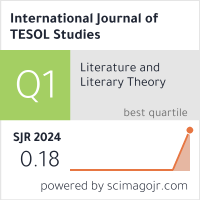2632-6779 (Print)
2633-6898 (Online)


Scopus
Ulrich’s Periodicals Directory (ProQuest)
MLA International Bibliography
MLA Directory of Periodicals
Directory of Open Access Journals (DOAJ)
QOAM (Quality Open Access Market)
British National Bibliography
WAC Clearinghouse Journal Listings
EBSCO Education
ICI Journals Master List
ERIH PLUS
CNKI Scholar
Gale-Cengage
WorldCat
Crossref
Baidu Scholar
British Library
J-Gate
ROAD
BASE
Publons
Google Scholar
Semantic Scholar
ORE Directory
TIRF
China National Center for Philosophy and Social Sciences Documentation
Michael Rabbidge
The University of Waikato, New Zealand
Abdul Saboor Zaheeb
Hankuk University of Foreign Studies, South Korea
Abstract
A decade after its introduction, Darvin and Norton’s (2015) Model of Investment remains a cornerstone in understanding the intersection of identity, capital, and ideology in language learning. This commentary revisits the model in light of evolving sociopolitical contexts, exploring its applicability and adaptability to rapidly shifting global landscapes. Specifically, it foregrounds the fluidity of symbolic capital, the complexities of identity negotiation, and the ideological forces that shape learners’ positioning within power structures. Drawing on research conducted in Afghanistan during periods of significant ideological upheaval, the article demonstrates how sociopolitical instability, gendered oppression, and class-based exclusion influence learners’ investments in language practices. By applying an intersectional lens, the commentary conceptualizes context as multi-layered—comprising co-existing and, at times, contradictory ideological frameworks and social conditions. This perspective reveals how identity, capital, and ideology interact dynamically, producing both barriers and possibilities for language learners. In doing so, the commentary extends the theoretical scope of the Model of Investment, offering a more comprehensive and inclusive account of language learning under conditions of marginalization. It concludes with implications for policy and pedagogy, advocating for decolonial approaches and inclusive practices in TESOL. Ultimately, this work affirms the enduring relevance of the Model of Investment while pushing its boundaries to better engage with the complexities of a globalized and ideologically charged world.
Keywords
Investment, intersectionality, Afghanistan, ideology, identity